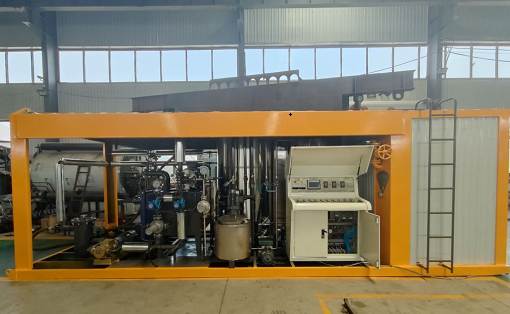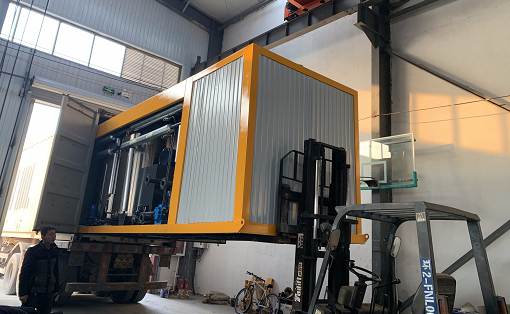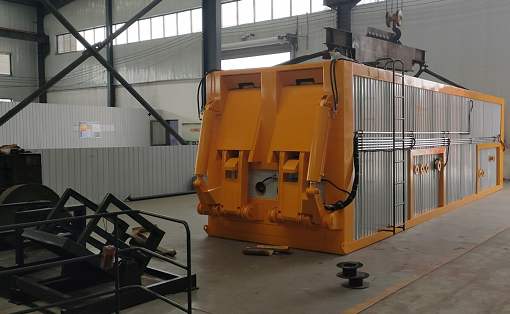How does the bitumen drum melting equipment operate?
What is the overall operation process of bitumen (composition: asphaltene and resin) drum melting equipment?
The bitumen (composition: asphaltene and resin) drum melting equipment produced by our company mainly uses barrel debarking and melting of large barrels of bitumen (definition: the transformation process of materials from solid to liquid), using high-temperature thermal oil as the material (playing a decision-making role substance), used in supporting facilities of high-temperature thermal oil heating equipment. Bitumen drum melter equipment has the functions of barrel delivery, barrel removal, storage, temperature raising, slag discharge, etc. It is an essential product for high-grade highway construction companies. Bitumen drum melter equipment can be used for resin barrel removal. The bitumen drum melter equipment mainly consists of barrel removal shell, hoisting mechanism, hydraulic booster and electrical control system.
What is the overall operation process of bitumen (composition: asphaltene and resin) drum melting equipment?
The bitumen (composition: asphaltene and resin) drum melting equipment produced by our company mainly uses barrel debarking and melting of large barrels of bitumen (definition: the transformation process of materials from solid to liquid), using high-temperature thermal oil as the material (playing a decision-making role substance), used in supporting facilities of high-temperature thermal oil heating equipment. Bitumen drum melter equipment has the functions of barrel delivery, barrel removal, storage, temperature raising, slag discharge, etc. It is an essential product for high-grade highway construction companies. Bitumen drum melter equipment can be used for resin barrel removal. The bitumen drum melter equipment mainly consists of barrel removal shell, hoisting mechanism, hydraulic booster and electrical control system.
The shell is divided into two chambers, the left and right chambers. The upper chamber is a large barrel of asphalt melting (definition: the process of material changing from solid to liquid) chamber. There are heating coils evenly distributed around it. The heating pipes and the asphalt barrel mainly transfer heat by radiation. To achieve the purpose of removing asphalt barrels, multiple guide rails serve as rails for the bitumen barrels to enter. The lower chamber mainly reheats the slipped bitumen in the barrel until the temperature reaches the suction pump temperature (130°C), and then pumps the bitumen pump into the high-temperature tank. If the heating time is increased, a higher temperature can be obtained. The hoisting mechanism adopts a cantilever structure. The bitumen barrel is lifted up by the electric hoist, and then moved sideways to place the bitumen barrel on the slide rail. The barrel is then sent into the upper chamber by a hydraulic booster. In addition, an inlet and outlet are opened at the rear end to inject a Only empty buckets. There is also an oil tank on the bitumen barrel entrance service platform to prevent the loss of dripping bitumen.



































